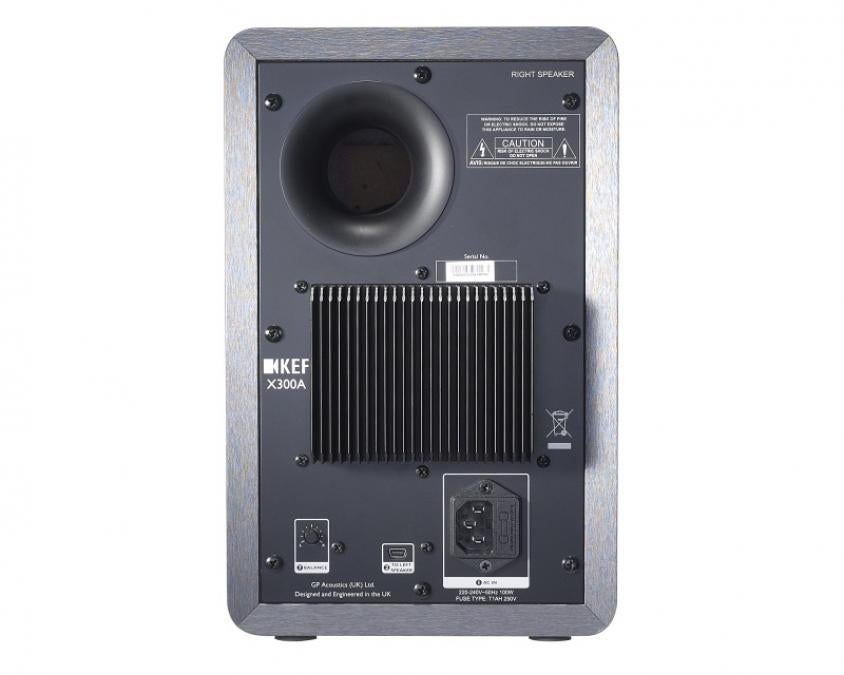Kef X300A review
The best USB speakers we’ve ever heard, but they’re expensive
KEF is a legendary name in the world of premium Hi-Fi, so when a company of its stature moves into the world of computer audio, you sit up and take notice. The KEF X300A speakers use KEF’s unusual lemon-squeezer-shaped Uni-Q driver, which positions the tweeter inside the woofer. This means all sound comes from the same place, the intended effect being to make the sound, particularly its positional aspects, more realistic.
The speakers are both individually powered, which means they can produce loads of volume and you don’t have to worry about the kind of whining interference which can affect bus-powered speakers that don’t have a ground connection.

The data connection is also high quality, and uses an asynchronous USB connection. In simple terms, asynchronous USB hardware has a built-in timing chip that controls how much data is being passed through, so the setup isn’t dependent upon computer’s own clock cycle. This eliminates occasional judders and glitches that can occur in USB audio devices using adaptive USB connections.
Although both speakers have their own 3-pin power connections, each has different controls. The left speaker is the primary USB audio device and connects directly to your PC. Internally, it’s equipped with a high-end DAC that supports a sample rate of up to 96kHz. We like its neutral, balanced sound.

Instead of an analogue audio cable, the X300As use a digital mini USB connection to join the left and right speakers. The left speaker also has a 3.5mm auxiliary input for connecting external audio devices such as MP3 players, rather than playing music from your PC through the built-in USB DAC.
The right-hand speaker also has a balance pot, which you’ll probably want to keep at the centre position unless your speakers are unevenly spaced. On the left is a gain pot that lets you set an appropriate baseline volume. It’s difficult to knock the pots out of position once you’re happy with them, but it’s also quite difficult to adjust them if you can’t look at the rear of the speakers. There’s also an EQ switch on the left speaker that switches between modes designed for use on a desk or on speaker stands.
The biggest challenge is finding somewhere to put the speakers. Each measures a hefty 280x180x243mm including its heat sink, which made our standard-issue Ikea desk feel very crowded when we placed them alongside a pair of 22in displays, mouse and keyboard. You can also put them on a slightly elevated set of shelves or on stands, but you’ll ideally want to have them pointed towards your head.
Specifications | |
|---|---|
| Rating | ***** |
| Speaker configuration | 2.0 |
| RMS power output | 70W |
| Power consumption standby | 0W |
| Power consumption on | 28W |
| Analogue inputs | 3.5mm stereo |
| Digital inputs | USB |
| Dock connector | none |
| Headphone output | none |
| Satellite cable lengths | 2m between satellites |
| Cable type | replaceable |
| Controls located | rear of speakers |
| Digital processing | none |
| Tone controls | none |
| Price | £599 |
| Supplier | http://www.hifigear.co.uk |
| Details | www.kef.com |










